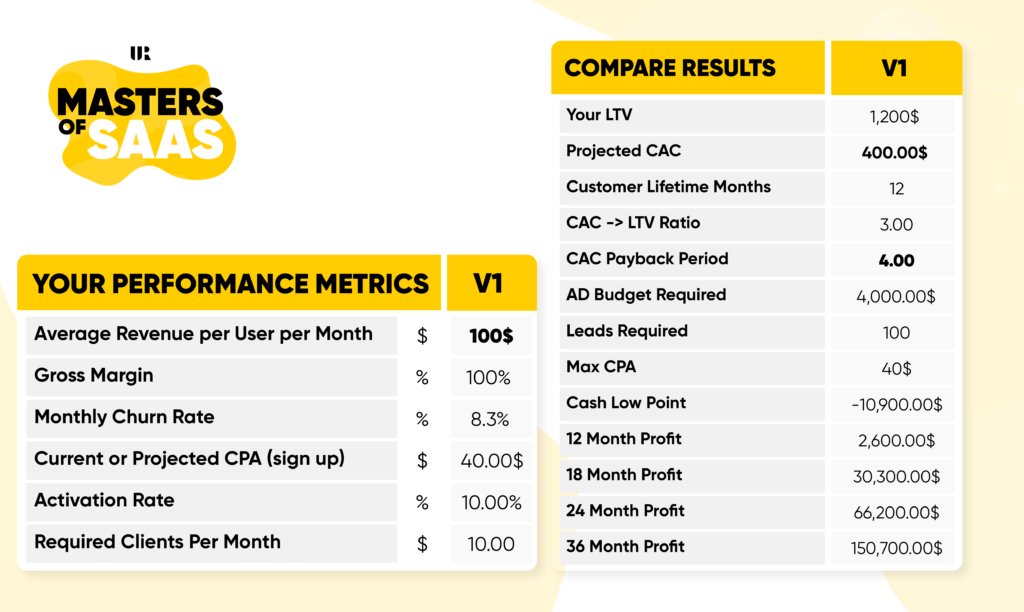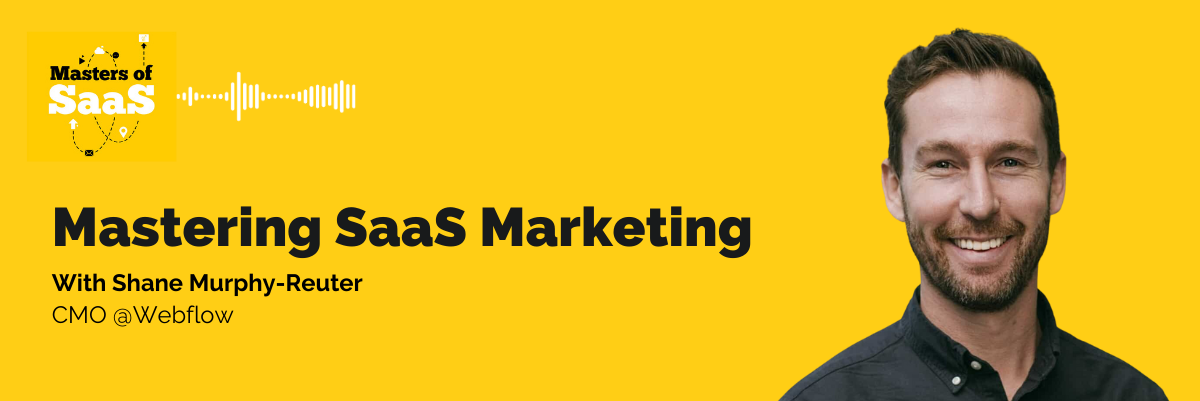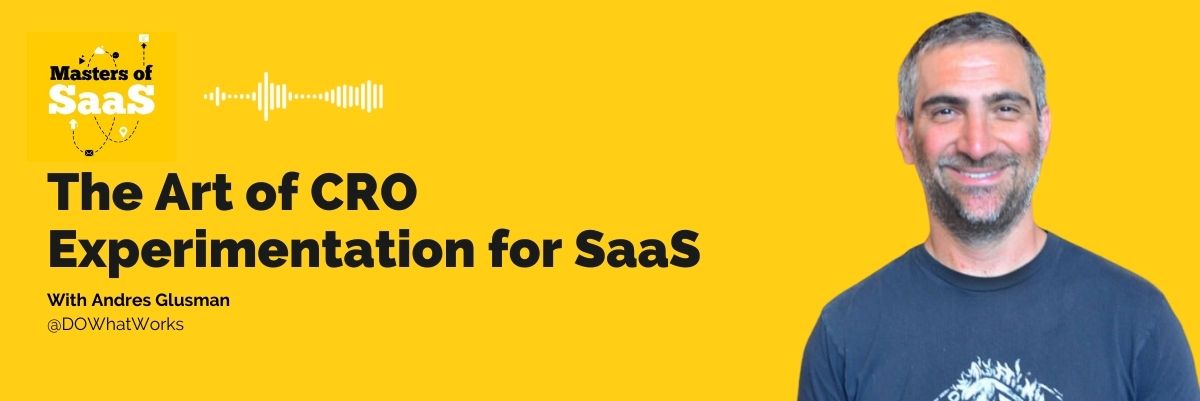Listen on Apple Podcasts Listen on Spotify Listen on Google PodcastsWe spoke to Chris Ronzio, Founder and CEO of Trainual about how to approach unit economics as a SaaS startup and why your customers can help innovate your product.
In this episode, we speak with Chris Ronzio, the CEO Founder of Trainual, the leading knowledge management and training platform for growing teams.
Chris was able to take the company from zero to 5 million ARR in just two and a half years, and by our standards, that’s pretty impressive.
The episode is quite fast-paced and covers a lot of ground and interesting insights. You’ll get to hear about the first-year challenges: from how the company found its primary traction channel to how a strategic credit card debt of $300,000 helped fuel the growth of the company.
What else you’ll learn:
- why you must nail down your paid media unit economics before scaling your startup,
- thoughts and tips for founders looking to take funding
- the importance of customer feedback and the main lessons Chris got from meeting the infamous Gary Vee.
Love the show? Please review us on Apple or Google podcasts.
Quick bio
Name: Chris Ronzio
Profile: Founder and CEO of Trainual, author of 100 Hacks to Improve Your Business, Inc.com “Process Playbook” columnist, small business investor, husband, and father.
Chris on the web: Website | LinkedIn | Twitter | Instagram
Top tips from this episode
You can think of a service business as a really great lifestyle OR as paid R&D!
It’s no secret that SaaS businesses are much more scalable than a service company. In the long term, it can be a huge payoff to make the transition.
According to Chris, It’s not enough to realize that you’re solving the same problem for your customers and decide to capitalize on that demand. If your service isn’t evolving into your product, you can be sure that technology, market trends and skill scarcity will turn your business into a race against time.
And how do you make sure this transition works for you?
The trick is to consider your service business as paid R&D. Work closely with your target customers and get to know them. This way, by the time you have a product you can really scale, you’ll know their businesses inside-out.
“We were getting paid by the customers to learn that instead of launching a new business. In the second scenario, you know nothing about the customer and spend the first years trying to burn through funding while you get up and running.”
The importance of understanding SaaS Unit economics

The more successful your company gets at acquiring customers, the bigger the early financial losses. Therefore, it’s much harder for management and investors to figure out whether the SaaS business is financially viable.
That’s where unit economics comes in.
Most businesses start by reverse engineering their customer lifetime value. With customer acquisition costs being at a 3:1 ratio, we’ll take a straightforward example. Let’s say you’re charging $100 a month.
Most people stick around for 12 months. Your LTV is $1200. So this means that your customer acquisition cost is $400, which is super simple.
The problem is if you’re spending $400 to acquire that customer on day one, and you’re only charging $100 a month, the payback period is four months. So you get into this cash flow troph before you come out the other end.
The better solution: instead of guessing acquisition costs, start reverse-engineering your customer lifetime value.
“We knew what we were charging per month and how many customers were signing up in the first two months. Based on data from previous customers, we knew that if we found a good customer, they would stick for a year or two. We felt like that was a pretty safe bet to make.
In terms of the acquisition cost, I had seen these ratios that were like CAC to LTV, you want to be 3:1 ratio. I thought, okay, let’s go with that. If someone’s gonna pay us $1500 over their lifetime of the product, we can spend $500 to acquire them. Let’s try to do that.”
Episode Highlights
Transcript excerpts from the interview
On identifying funding opportunities
“Tip number one is that you want to start the fundraising work the process way before you need it. In my consulting business before, I was in masterminds and networking groups with people that were active investors. Even in month one, when I had that launch party for Trainual, I had people that wanted to put money in.
By not taking the money for that first year, when it came a time that I needed it, it was just a couple of phone calls. And they were like, “now I can get in? Absolutely! Let’s do it!”
It was just working out the details. So that first round of funding was just a convertible note financing that we did a year into the business. And so that lasted us another year where it just continued to buy ads and let us keep scaling.”
“When we were interviewing investors, we spent a lot of time trying to understand if their trajectory was a good fit for what we wanted. To be clear, it’s not about growth at all costs for us. It’s about smart strategic growth.
On prioritizing time spent with customers
“The closer I can be to the customer and do calls with investors and with partners, the more I understand the market and the ecosystem more clearly every day. Next, I translate that understanding into the vision that drives the rest of the departments.”
On cultivating an authentic workplace culture
“I saw one quote on Instagram, and it said, the best part about telling the truth is, you don’t have to remember what you said.
I think this relates to culture. If your culture is just the authentic representation of how things actually are, there’s nothing really to do. You’re just fostering that and finding creative ways to continue to get it out among your people. However, if you make it up and it lacks a real foundation, your people won’t buy into it.
Culture for me is: what do we believe in? What are the pillars of this business? What type of environment? Would I want to be in five years that we could start to lay the groundwork for today?”
On protecting your own time
“I’ve tried my best to repurpose content. I put my cell phone number out there; I get Instagram and LinkedIn direct messages all day, every day. As much as I can, I try to send people recordings of me answering a question that I’ve gotten before. In short, I eat my own dog food and document things so I don’t repeat them. I do that with questions as well.”
On leveraging other people’s audiences
“So Gary Vee coaching us about our target market turned into clips that we were able to put in our ads is just advice from him. And people love him. He’s got a huge following. Attaching your brand to some authority like Gary is a brilliant thing to do. It opened our eyes to the fact that we can do that with other influencers and celebrities.
(…)We got five-six million views on ads we did with actors from The Office because there’s some sense of authority that you attach. You know the actors, you might not know Trainual, you watch the ad, now you know Trainual. It’s an easy one-two step into selling something”.
Top quotes
[20:46]
I think the decision to take funding is a really personal one; it comes down to what kind of company you want to build.
If you want to build a profitable lifestyle business, and maybe sell it for a massive amount, that’s one path.
However, if you want to be a brand that is known around the world, then that’s a different path. That was just the decision we had to make.
[30:06]
Who’s getting the most value out of all your customers?
Go figure out what they’re doing. What’s the pain point that you’re solving for them? Why is it working so well for them? Compare and contrast that to the people that are going out the back door. That’s something we’re constantly revisiting.
As we got bigger, we would look at all the review sites and basically use the language customers put on the review sites, in our ads, and on our website. The reason for this is, they’re speaking the terms! You just need to be able to flip that around into sales copy. I think that was crucial for us to get past that point.
[43:42]
There are so many great people that are a few steps ahead of the path that I’m on. I think if you know where you’re trying to get to, it becomes easy to spot them. So I’ve never been shy about reaching out to people that I want to build a relationship. For me, this B2B–SaaS is great criteria for finding some mentors.




Share